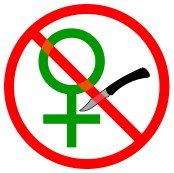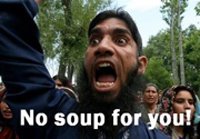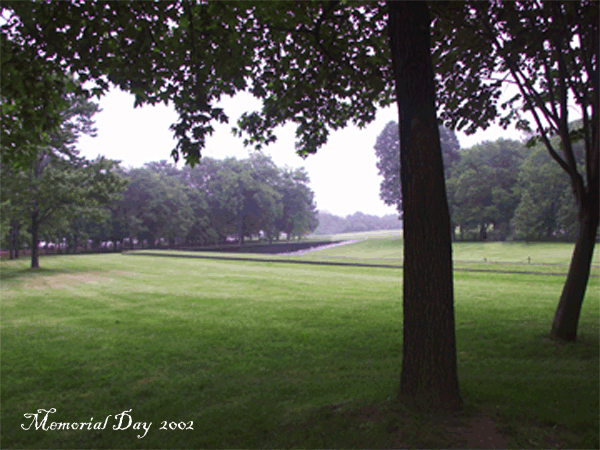The Effect of Muslim Demographics
REPOSTED FROM FROM MUSLIM STATISTICS:
The Effect of Muslim Demographics
Posted on November 8, 2012 by admin
Islam is not a religion, nor is it a cult. In its fullest form, it is a complete, total, 100% system of life.
Islam has religious, legal, political, economic, social, and military components. The religious component is a beard for all of the other components.
Islamization begins when there are sufficient Muslims in a country to agitate for their religious privileges. When politically correct, tolerant, and culturally diverse societies agree to Muslim demands for their religious privileges, some of the other components tend to creep in as well.
The following analysis of Islamic influence and Muslim demographics around the world is adapted from Dr. Peter Hammond’s book, “Slavery, Terrorism & Islam: Historical Roots and Contemporary Threat”.
.
Here’s how it works:.
Muslim Immigration And The Prolonged Effect On The Political And Social Net Of Society
.
Islam’s Effect On Society At 0%-2%
United States — Muslim 0.6%
Australia — Muslim 1.5%
Canada — Muslim 1.9%
China — Muslim 1.8%
Denmark — Muslim 2%
Italy — Muslim 1.5%
Ireland — Muslim 2%
Norway — Muslim 1.8%
1.8% Muslim population in Norway: In 2011 Norwegian authorities reported that 100% of all rapes in the entire capital, Oslo, were committed by immigrants of which 90% were committed by Muslim immigrants.
.
Islam’s Effect On Society At 2%-5%
At 2% to 5%, they begin to proselytize from other ethnic minorities and disaffected groups, often with major recruiting from the jails and among street gangs. This is happening in:
.
Germany — Muslim 3.7% (now 5.4% since this report was made)
United Kingdom — Muslim 2.7% (now 3.3% since this report was made)
Spain — Muslim 4%
Thailand — Muslim 4.6%
Islam’s Effect On Society At 5%-9%
From 5% on, they exercise an inordinate influence in proportion to their percentage of the population. For example, they will push for the introduction of halal (clean by Islamic standards) food, thereby securing food preparation jobs for Muslims. They will increase pressure on supermarket chains to feature halal on their shelves — along with threats for failure to comply. This is occurring in:
France — Muslim 8%
Philippines — Muslim 5%
Sweden — Muslim 5%
Australia — Muslim 6%
Belgium — Muslim 6%
Switzerland — Muslim 4.3%
The Netherlands — Muslim 5.5%
Trinidad & Tobago — Muslim 5.8%
At this point, they will work to get the ruling government to allow them to rule themselves (within their ghettos) under Sharia, the Islamic Law. The ultimate goal of Islamists is to establish Sharia law over the entire world.
Muslim population 5%: In Sweden nearly all of 77.6% of total rapes in the country, are committed by Muslim migrants. In 2012 the capital experienced a 69% surge in the Muslim rape wave of its women. What will be the violence and assault report when the Muslim population doubles, and triples, and quadruples?
.
Islam’s Effect On Society At 10%-19%
When Muslims approach 10% of the population, they tend to increase lawlessness as a means of complaint about their conditions. In Paris, we are already seeing car-burnings. Any non-Muslim action offends Islam, and results in uprisings and threats, such as in Amsterdam, with opposition to Mohammed cartoons and films about Islam. Such tensions are seen daily, particularly in Muslim sections, in:
Guyana — Muslim 10%
Bulgaria — Muslim 10%
Central Africa — Muslim 15%
India — Muslim 14.6%
Israel — Muslim 16%
Kenya — Muslim 10%
Russia — Muslim 15%
.
Islam’s Effect On Society At 20%-39%
After reaching 20%, nations can expect hair-trigger rioting, jihad militia formations, sporadic killings, and the burnings of Christian churches and Jewish synagogues, such as in:
Ethiopia — Muslim 32.8%
Suriname — Muslim 19.6%
Thailand — Muslim 35%
Togo — Muslim 20%
.
Islam’s Effect On Society At 40%-60%
At 40%, nations experience widespread massacres, chronic terror attacks, and ongoing militia warfare, non-stop church destruction, Boko Haram, etc., such as in:
Albania — Muslim 38.8%-85%
Bosnia — Muslim 40%
Chad — Muslim 53.1%
Guinea Bissau — Muslim 50%
Ivory Coast — Muslim 40%
Lebanon — Muslim 59.7%
Nigeria – Muslim 50%
.
Islam’s Effect On Society At 60%-80%
From 60%, nations experience unfettered persecution of non-believers of all other religions (including non-conforming Muslims), sporadic ethnic cleansing (genocide), use of Sharia Law as a weapon, and Jizya, the tax placed on infidels, such as in:
Albania — Muslim 70%
Kazakhstan — 65%
Malaysia — Muslim 60.4%
Qatar — Muslim 77.5%
Sudan — Muslim 70%
Note: Slavery was reintroduced into Sudan under increased Muslim political rule and establishment of Sharia law. In 1995, Human Rights Watch first reported on slavery in Sudan in the context of the Second Sudanese Civil War. In 1996, two more reports emerged, one by a United Nations representative and another by reporters from the Baltimore Sun.
.
Islam’s Effect On Society At 80%-99%
After 80%, expect daily intimidation and violent jihad, some State-run ethnic cleansing, and even some genocide, as these nations drive out the infidels, and move toward 100% Muslim, such as has been experienced and in some ways is on-going in:
Bangladesh — Muslim 83%
Egypt — Muslim 90%
Gaza — Muslim 98.7%
Indonesia — Muslim 86.1%
Iran — Muslim 98%
Iraq — Muslim 97%
Jordan — Muslim 92%
Mali – Muslim 90%
Morocco — Muslim 98.7%
Pakistan — Muslim 97%
Palestine — Muslim 99%
Syria — Muslim 90%
Tajikistan — Muslim 90%
Turkey — Muslim 99.8%
United Arab Emirates — Muslim 96%
.
Islam’s Effect On Society
100% will usher in the peace of ‘Dar-es-Salaam’ — the Islamic House of Peace. Here there’s supposed to be peace, because everybody is a Muslim, the Madrasses are the only schools, and the Koran is the only word, such as in:
Afghanistan — Muslim 100%
Saudi Arabia — Muslim 100%
Somalia — Muslim 100%
Yemen — Muslim 100%
Unfortunately, peace is never achieved, as in these 100% states the most radical Muslims intimidate and spew hatred, and satisfy their blood lust by killing less radical Muslims, for a variety of reasons.
“Before I was nine I had learned the basic canon of Arab life. It was me against my brother; me and my brother against our father; my family against my cousins and the clan; the clan against the tribe; the tribe against the world, and all of us against the infidel.” — Leon Uris, “The Haj”.
Democracy and Islam cannot co-exist. Every Muslim government is either dictatorial or autocratic.


.jpg)
















